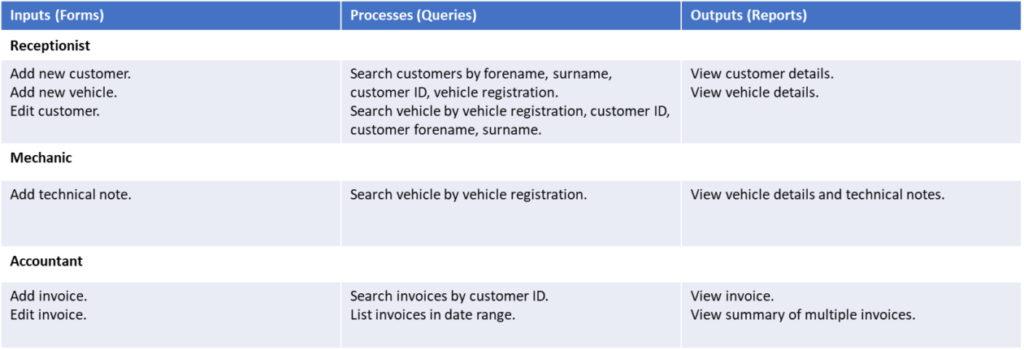During the analysis phase of creating a database you need to examine:
- End user requirements
- Functional requirements
End user requirements
End user requirements are the tasks that the end user of the database wants to perform on it.
You could ask a sample group of end users what they need to system to provide to get an idea of the inputs, outputs and processes that you will need for the database.
Functional requirements
Functional requirements are the tasks that the database will need to perform.
Based on the end user requirements you can work out the tables and fields required.
Then you can work out the following:
- What input forms are required to add a new entity.
- What processes are needed to query the data.
- That reports are needed to view the data.
Example
A garage wants a database to manage their customer details. What might each of the following want from the system:
Receptionist
- Enter new customer details
- Enter new vehicle details
- Search for customer details by name or vehicle registration
- Edit customer details
Mechanic
- Search for vehicle details and notes
- Add new note to vehicle
Accountant
- Enter new invoice
- View invoices over dates
Take your end user requirements and use them to come up with a list of input forms, processes and output views/reports.

